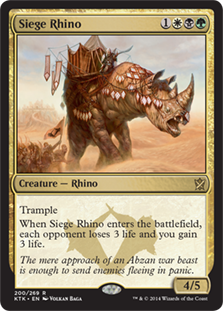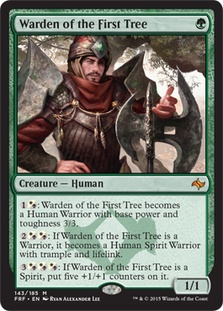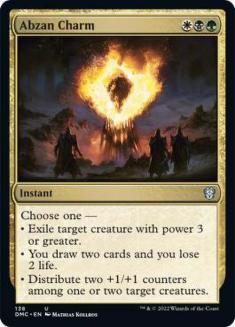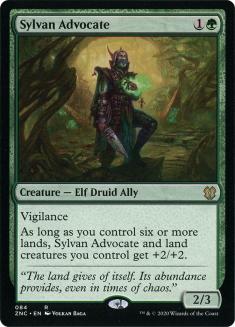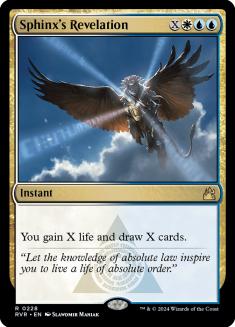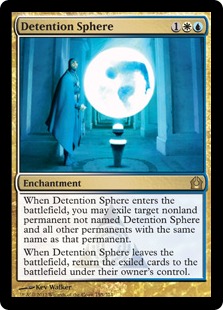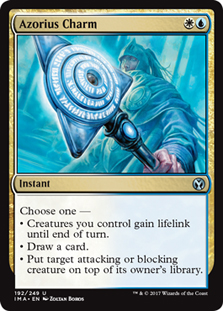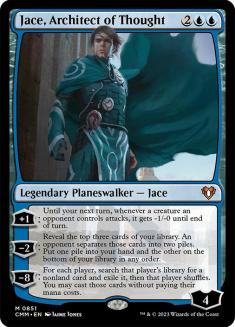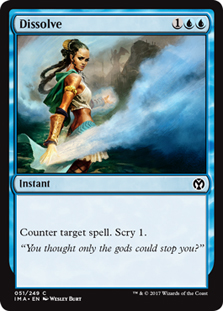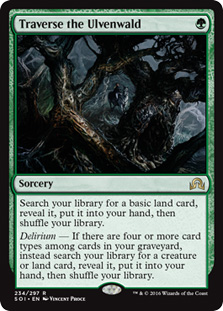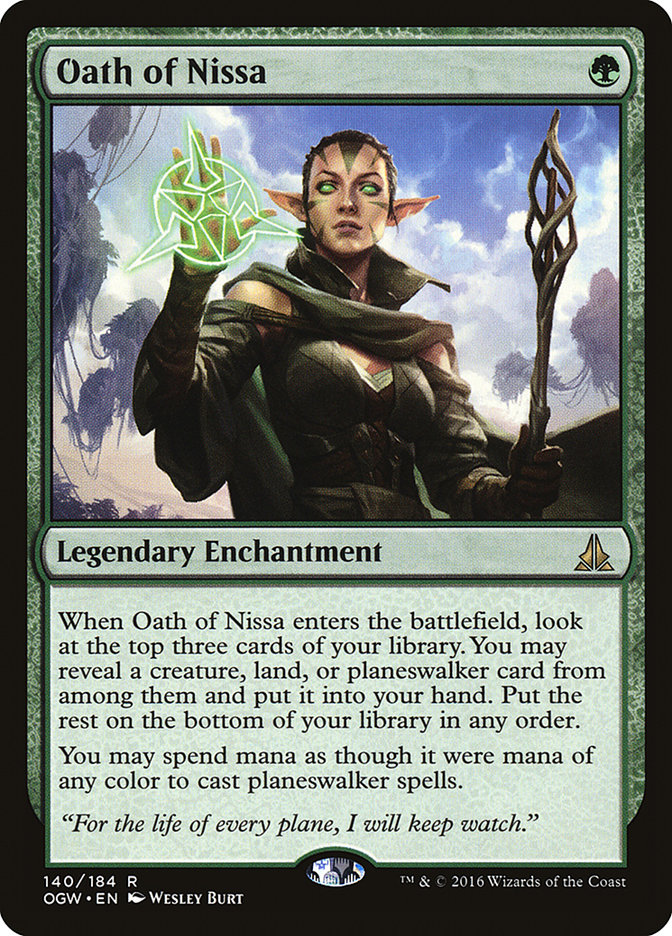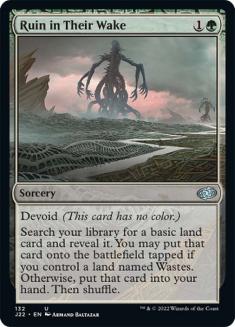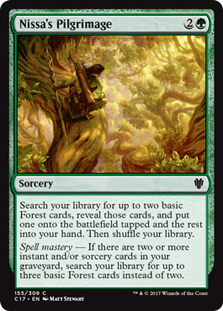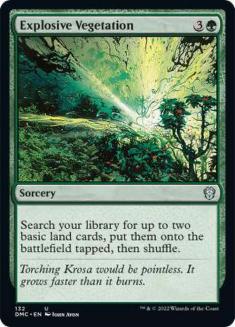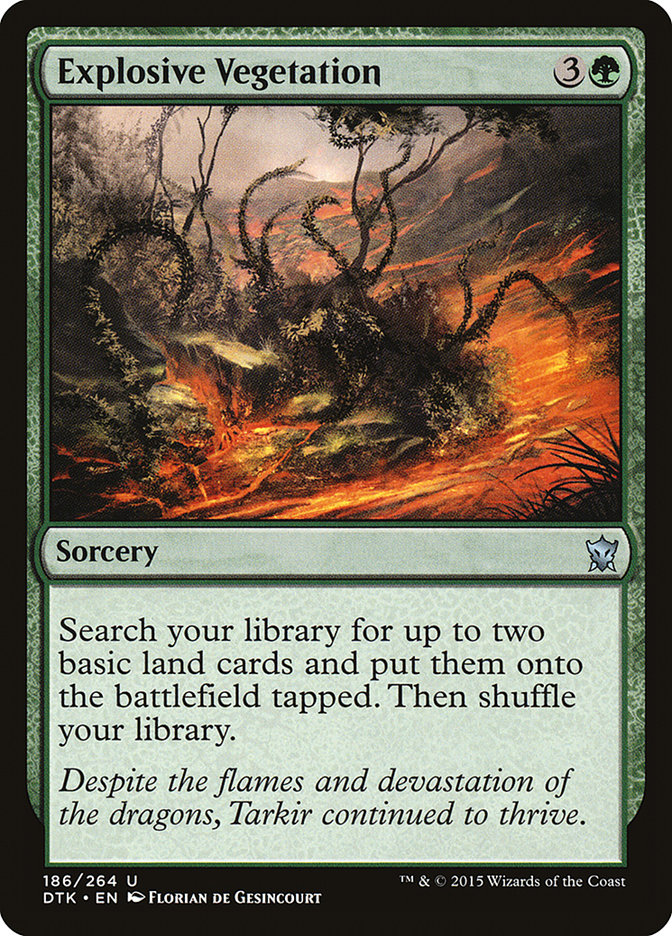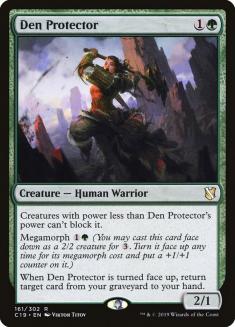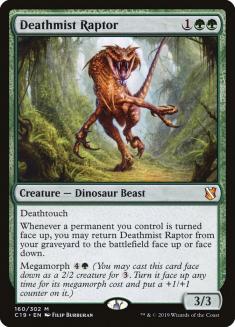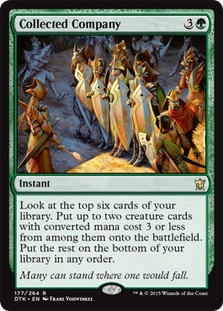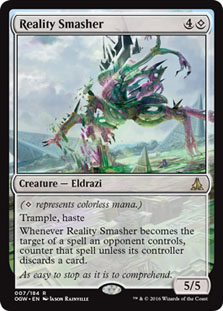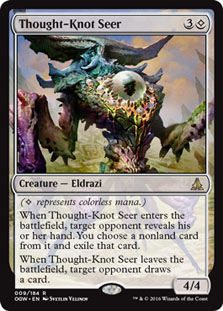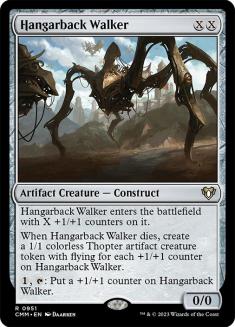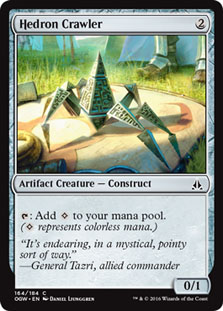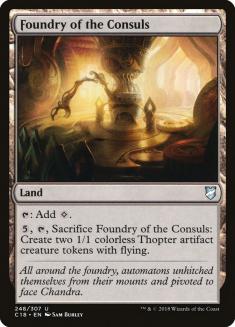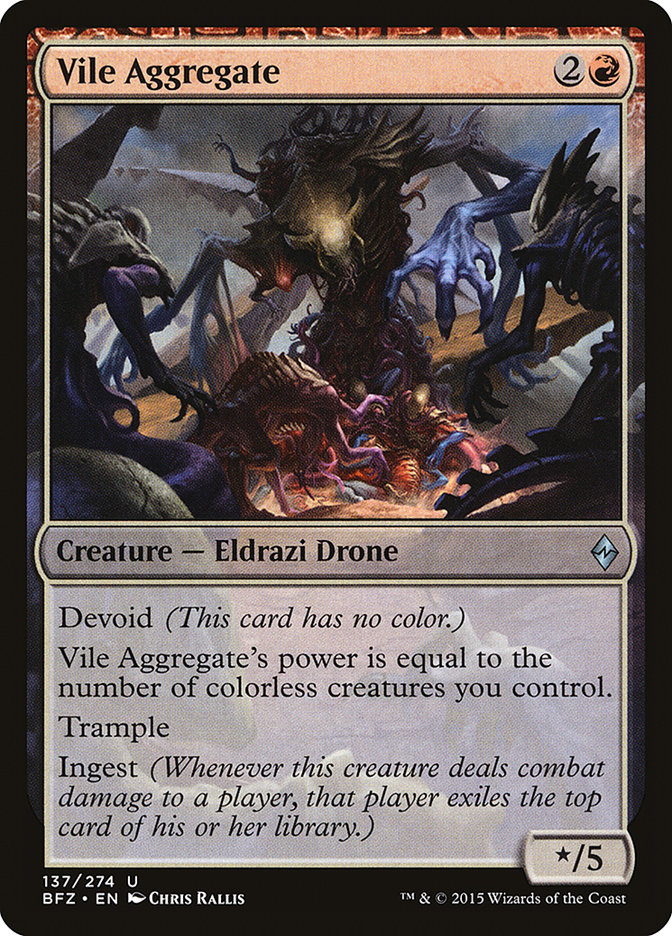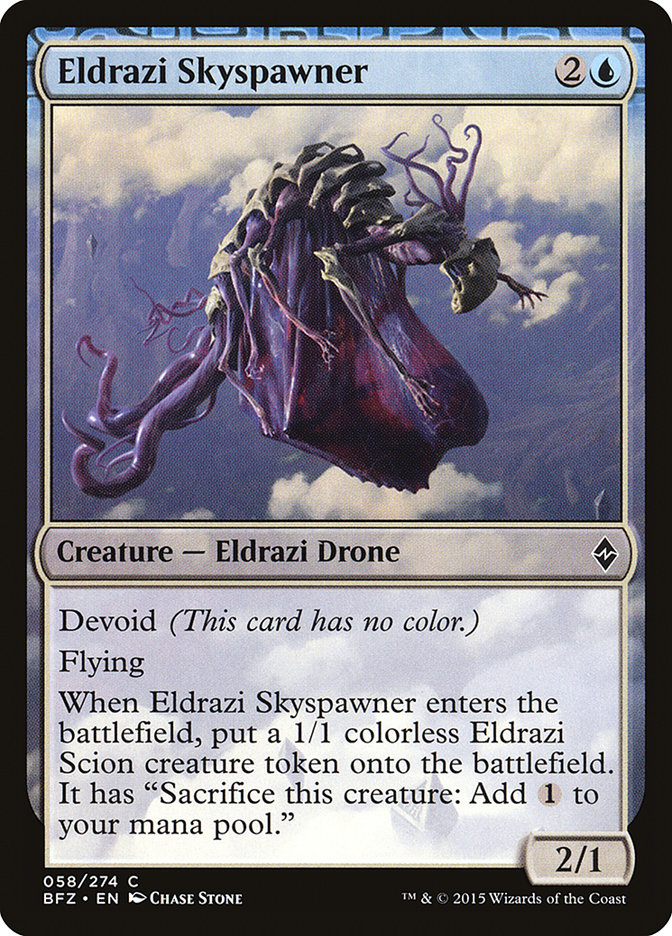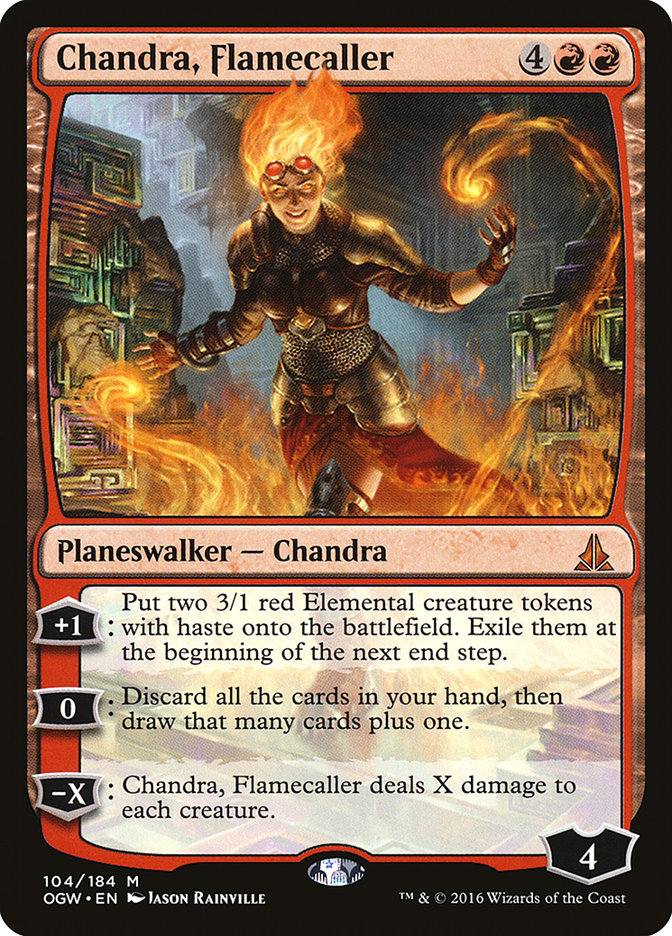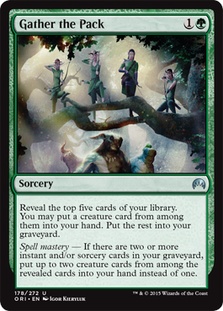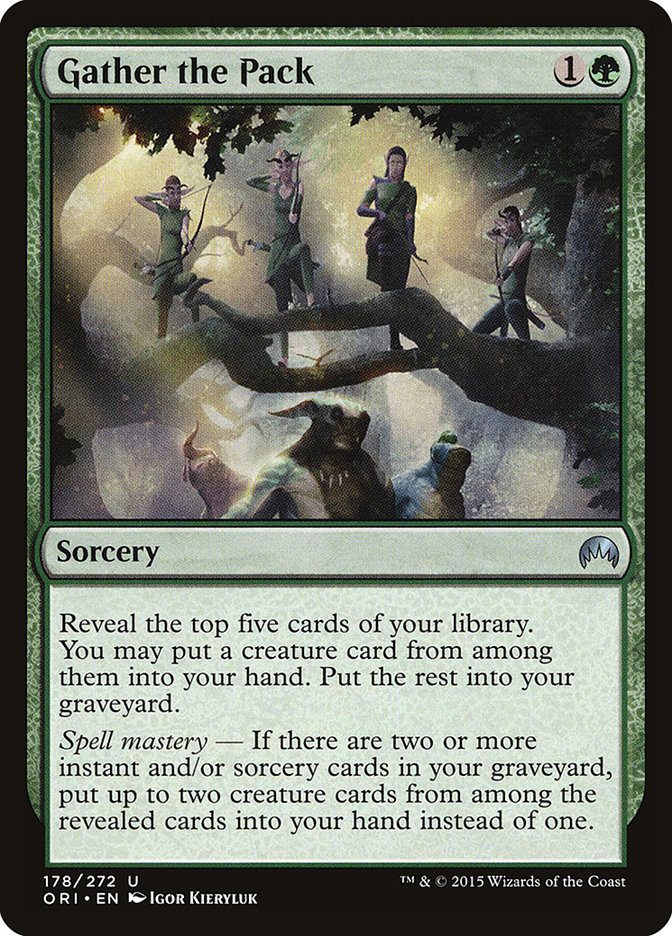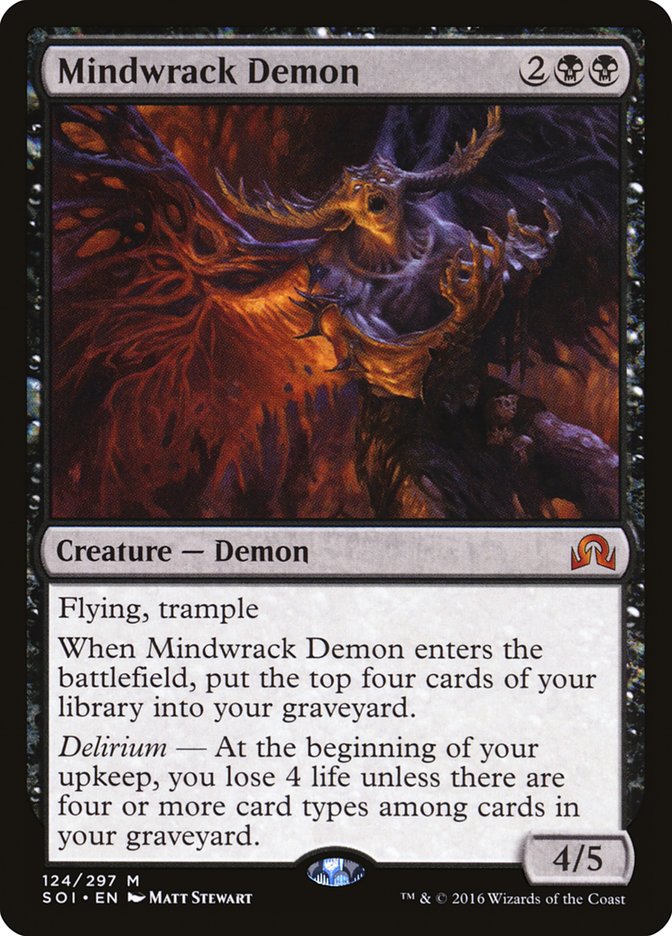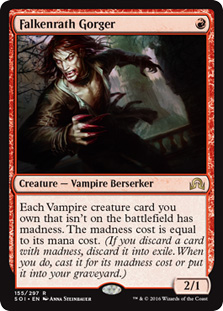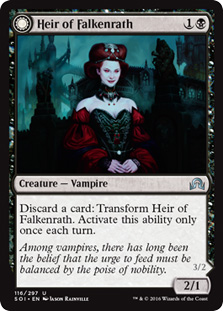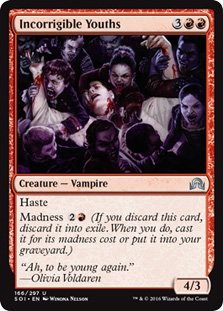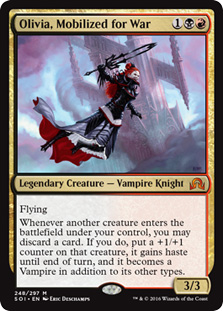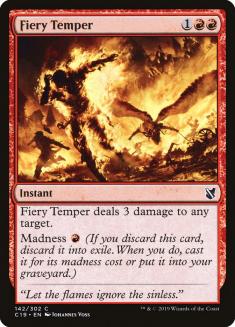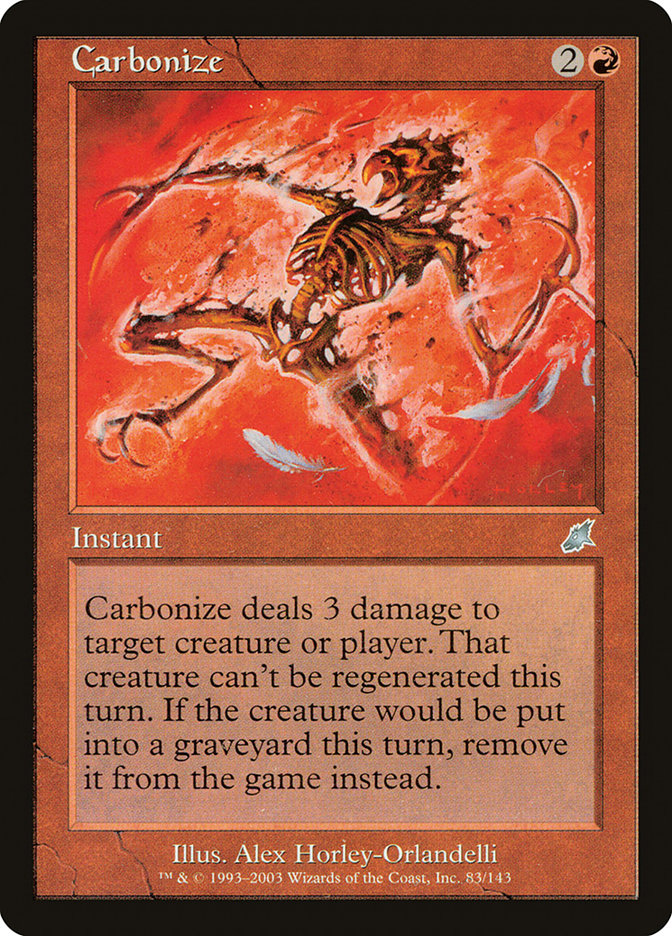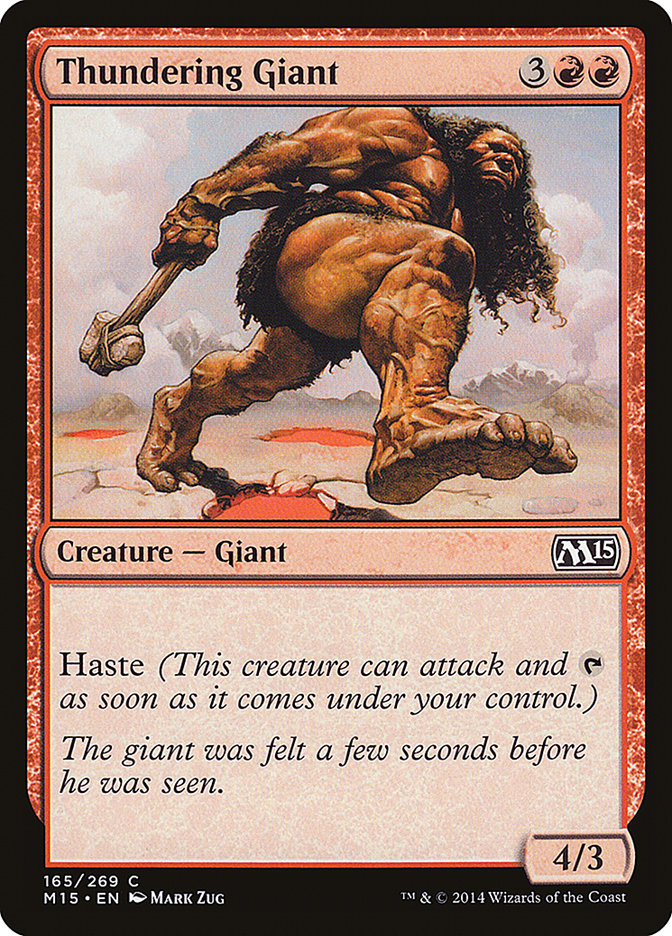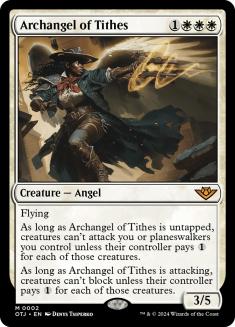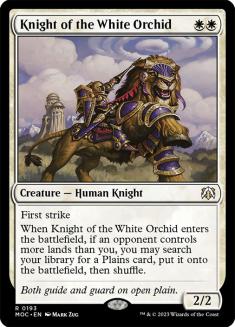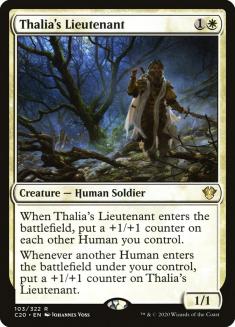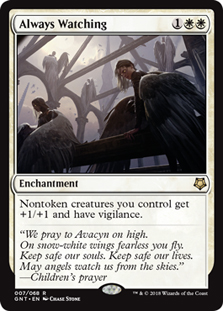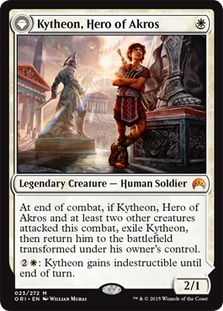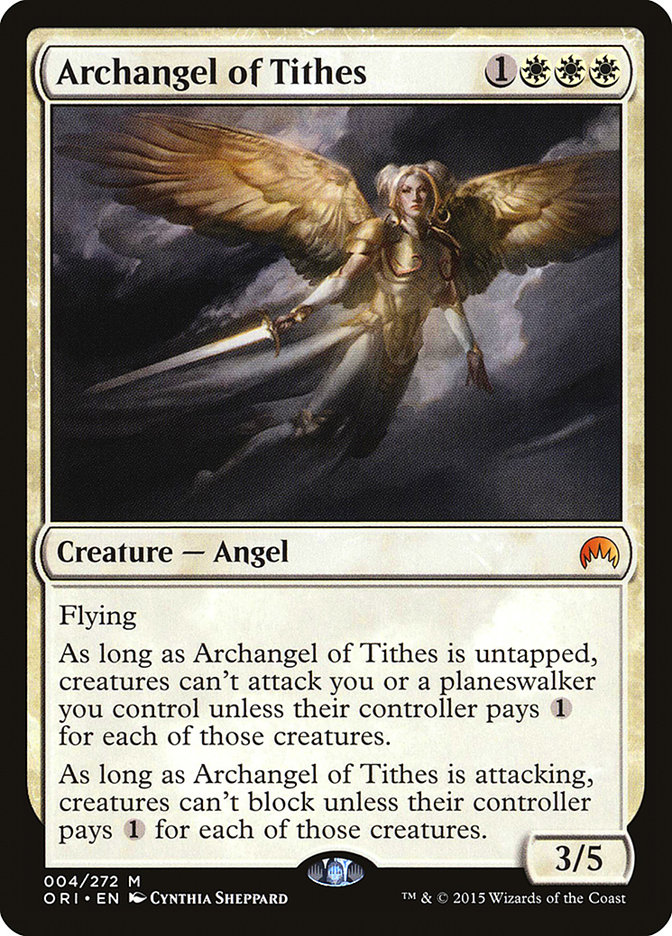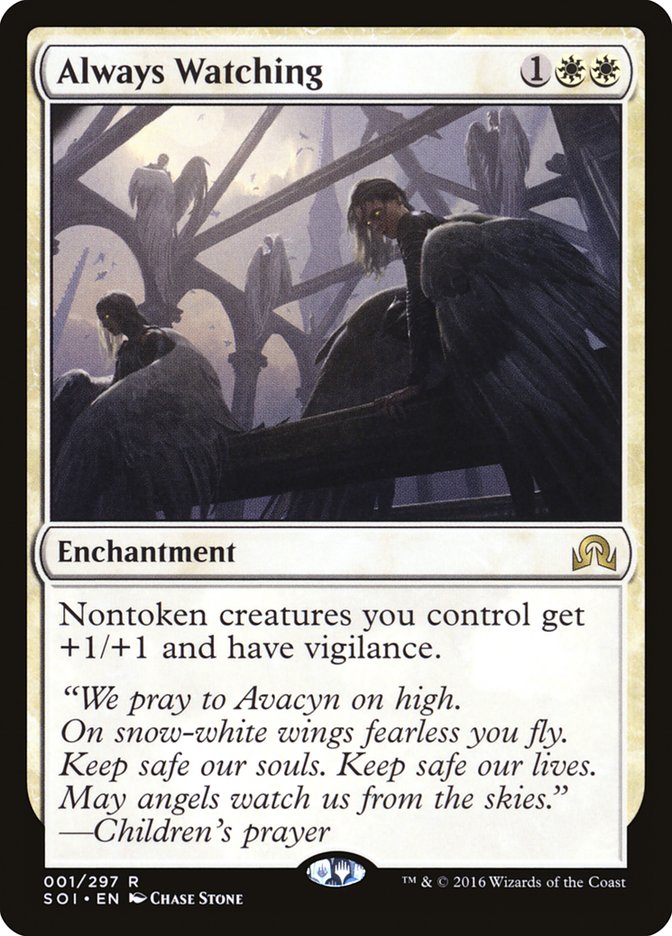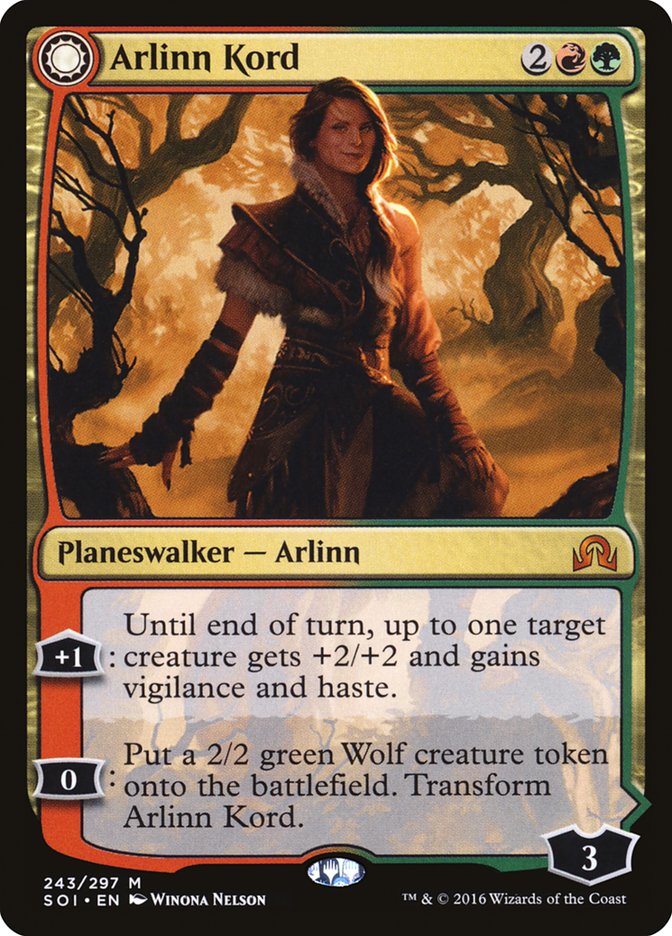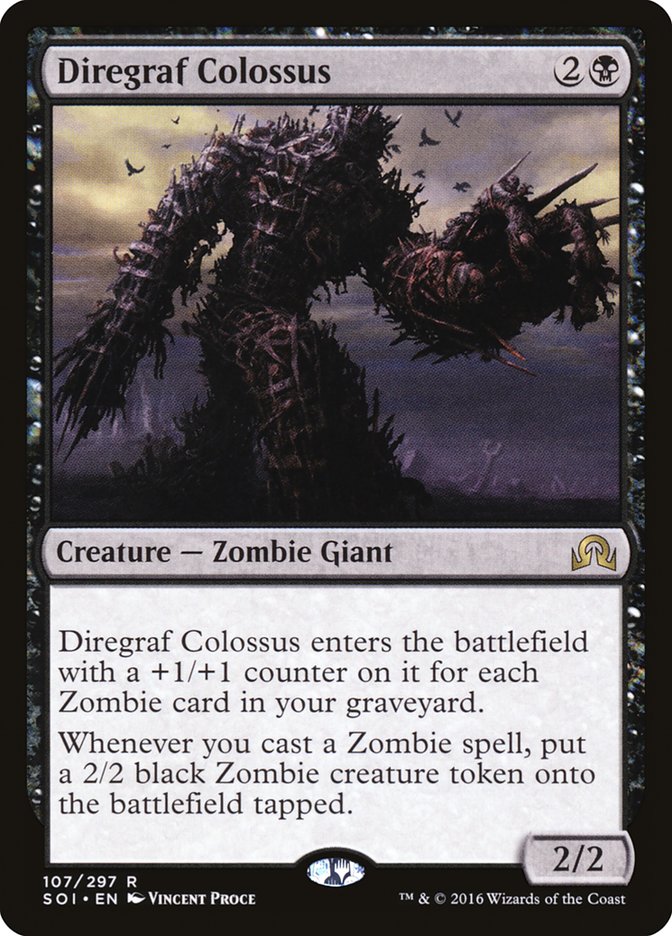When a deck survives multiple rotations and iterations of a format, it’s usually because it has an extremely solid core of cards. The deck may shift in small or big ways as old sets leave and new sets enter, but the heart of the deck usually does not change.
The core of a deck usually consists of around twenty cards, usually five playsets of cards. These cards are the most important and powerful in the deck, and without them the deck could not exist at all. The supporting cast will ebb and flow as the format shifts, but recognizing what cards are essential can help shape how you approach both playing with and against a deck. Often early versions of decks are not always playing four of each core card and are therefor not playing up to their full potential. This is why figuring out what your core cards are is so important.
For an easy example, let’s look at the soon-to-be-departed Abzan Aggro deck:
Creatures (24)
- 4 Anafenza, the Foremost
- 3 Wingmate Roc
- 1 Rakshasa Deathdealer
- 4 Siege Rhino
- 1 Tasigur, the Golden Fang
- 4 Warden of the First Tree
- 2 Den Protector
- 1 Kalitas, Traitor of Ghet
- 4 Sylvan Advocate
Planeswalkers (1)
Lands (26)
Spells (9)

It’s obvious that Siege Rhino is a core card, but what about its partners in crime?
Abzan Aggro Core
While Anthony shaved an Abzan Charm from the deck for other removal spells, it is clear that these cards have formed the core of Abzan Aggro for quite some time now. They are the best cards in the deck and the cards that must be made the focus when examining the deck.
Another, slightly more historical, example:
Creatures (1)
Planeswalkers (6)
Lands (27)
Spells (26)
- 2 Last Breath
- 2 Syncopate
- 2 Divination
- 4 Azorius Charm
- 4 Supreme Verdict
- 4 Detention Sphere
- 4 Sphinx's Revelation
- 4 Dissolve
Sideboard

The U/W Control decks of Return to Ravnica/Theros Standard had a rock-solid core that was rarely deviated from.
U/W Control Core
It is very telling of how good the U/W Control deck was that it had a 24-card core. These cards were simply much better than the other options available at the time, and they came together to create a very powerful and dominating deck.
Cores of Shadows over Innistrad
Identifying the core of a deck is very important, and even more important is being able to figure out what the cores of future decks are going to look like as well.
As we stand here on the precipice of Shadows over Innistrad Standard, looking for what sets of cards are going to make up the core of new decks in the format is a great way to approach deckbuilding. Once you have found a very good core, you can begin to find what cards best supplement that strategy.
Ramp Core
While it loses perhaps one of its best payoff cards in Ugin, the Spirit Dragon, the ramp decks of new Standard gain a valuable new tool in Traverse the Ulvenwald. This allows them to reliably have a Wastes in play on turn 2, which in turn makes Ruin in Their Wake the best ramp spell in the format.
Once the deck can reliably start ramping on turn 2, turn 3 Explosive Vegetation becomes the norm as well, which leads to a lot of turn 4 World Breakers and Dragonlord Atarkas, a scary thought. This is a full turn faster than the ramp deck of the previous format, and remember, this is a new format without very powerful threats like Mantis Rider and Siege Rhino breathing down your neck.
Having to play Wastes does put more strain on your manabase, but with Ugin, the Spirit Dragon no longer legal and a few good threat options at seven mana, Shrine of the Forsaken Gods becomes less important. The deck will probably still want an Ulamog, the Ceaseless Hunger as its ultimate endgame trump, but the focus will certainly be ramping up to six and seven mana as fast as possible.
Ramp has to be considered a frontrunner for one of the new pillars of the format.
Collected Company Core
Collected Company remains one of the best spells in the format, and while it loses out on some of the high-powered gold cards, it still has quite the supporting cast. The Den Protector / Deathmist Raptor package also has quite the pedigree, and pairing these cards with Sylvan Advocate feels like a no-brainer.
Jace, Vryn’s Prodigy is somewhat the odd one out here, as while he has more than proven his worth in Collected Company decks over the last few months, the format’s mana has gotten much worse. This means that jamming Jace into every deck will no longer be a valid strategy. You’ll need to be U/G to play Jace in your Collected Company deck, maybe with a light splash.
There’s no doubt that is an extremely powerful core, but figuring out the right support spells and colors will be difficult.
Eldrazi Core
This core is extremely interesting because it is completely colorless and could theoretically be paired with any color or enemy-color pair.
Both Mono-Blue and Mono-Red were viable options for the Eldrazi deck last format, and given that they only really came on at the end of the format and never had time to shine, I think they were much better than they were given credit for.
The blue version of the deck was very focused on evasion, with no real removal maindeck and lots of flyers battling alongside Whirler Rogue to help make your large Eldrazi unblockable. However, part of what made that deck work was how good Ghostfire Blade was at racing. Without Ghostfire Blade to power up your flying creatures for such a low cost, the deck gets much worse. The deck was also good at evading Four-Color Rally’s blockers and had a good Rally matchup, but that is no longer relevant.
The red version of the deck paired the powerful Eldrazi core with the best planeswalker in the format, Chandra, Flamecaller. Having played with the Mono-Red Eldrazi deck a good amount, the only really bad matchup was Four-Color Rally. With that deck no longer in the format and the deck losing almost no cards at all, look for Mono-Red Eldrazi to be an early frontrunner.
Delirium Core
Our first “new” core, this one uses the delirium mechanic from Shadows over Innistrad along with a sleeper just waiting for its day.
Gather the Pack was perhaps one of the most underused cards in previous Standard formats. It was the cornerstone to my Sultai Delve deck and is a fantastic enabler that often ends up being a two-mana Divination in the mid-game as well. Gather the Pack has fantastic synergy with all sorts of graveyard cards and plays perfectly with the new delirum mechanic. Deathmist Raptor and Den Protector are at it again and are extremely at home in a graveyard-based green deck, and Traverse the Ulvenwald fits in even better here than in the Ramp deck.
Perhaps the most exciting card is Mindwrack Demon. This thing is a house, and with almost no drawback in this deck, it’s hard to imagine a better finisher. Like Jace in the Collected Company core, however, it is the only card in the lot that’s not green. That could make it a bit awkward, but there are other good black cards that fit the theme, so it’s likely the B/G will be the standard delirium deck.
This is the core I am most excited for.
Madness Vampire Core
The Vampire/madness theme looks very pushed in this set, but I am not a believer.
As it stands I’m not even sure how to build this core, as it looks somewhat obvious but the power level just doesn’t seem to be there. For every time you curve turn 2 Heir of Falkenrath into turn 3 madness Incorrigible Youths, there will be games where your opponent profitably interacts with you and you are left playing these cards instead:
The individual power level of Magic cards has gone up so much since madness was last a thing that it almost doesn’t even feel worth it to try for the synergy. I hope I’m wrong, but I expect this to be the least successful of all the cores we’ve talked about today.
White Weenie Core
Another difficult-to-construct core. It’s hard to know how far we can push the Human theme.
One thing is for sure, though: Archangel of Tithes and Always Watching work insanely well together, and now that we aren’t priced into playing four colors in our deck, we can actually cast them both.
I fully expect Archangel of Tithes to break out in a big way in this format.
Always Watching is also just a very solid Glorious Anthem, and while not working with tokens kinda sucks, it is amazing with first strikers like Knight of the White Orchid. Also great with first strike creatures is Thalia’s Lieutenant, which is another card I expect to break out.
There’s a good beatdown deck here, and we can back it up with good removal like Silkwrap or go even deeper and splash Reflector Mage.
With so many interesting cards in the set, it is difficult to place some of them.
As you starting building decks and testing out ideas, make note of what is working well together and be on the lookout for cards that can come together to form a strong core. Even if the particular deck you are working on fails, being able to identify the key cards that work together and transfer them into a new shell is a great step that will save you a lot of time brewing.
Shadows over Innistrad looks awesome, and I can’t wait for #SCGBALT!
Challenge Thursdays
Week 5 of Challenge Thursdays was a rough one.
I try to select five challenges for the poll that I think will be both a lot of fun and competitive enough to win some matches, but last week I decided to put a choice on the list that probably shouldn’t have made the cut. The idea was fun and interesting, but it seemed extremely unlikely I would be able to salvage any wins with the deck at all.
The challenge was: “(Standard) U/W Control with Hedron Alignment as the win condition” – @Kitchenfinks126
It won the vote by a landslide, and I was correct. The fact that we even won two games was a miracle in and of itself.
Lands (27)
Spells (33)

Of course, it all falls on me as I am of course the final person to put the challenges on the poll, so I will work harder in the future to prescreen the challenges better to make sure they make for good watching.
Speaking of new challenges…
As always the poll will end at 6:00pm Eastern, which will give me one hour to construct my deck. Then you can tune in at 7:00pm for the start of the stream. I will be playing an entire League with the challenge deck, tweaking it a bit, and then playing another League right after.
How many wins can I get? Cast your vote and tune in to my stream at 7:00pm to see how it goes!


